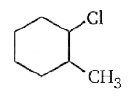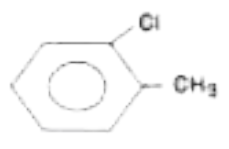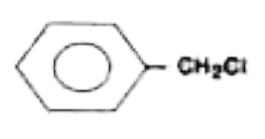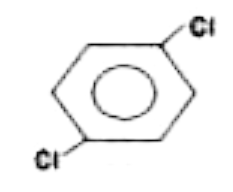Which of the following alkyl halides will undergo SN1 reaction most redily ?
(CH3)3C−F
(CH3)3C-Cl
(CH3)3C−Br
(CH3)3C−I
The correct Answer is:D
To determine which alkyl halide will undergo an SN1 reaction most readily, we need to consider two main factors: the stability of the carbocation formed during the reaction and the leaving group ability of the halide.
1. Understanding the SN1 Mechanism:
- The SN1 (Substitution Nucleophilic Unimolecular) reaction involves two steps. The first step is the formation of a carbocation after the leaving group departs, and the second step is the attack of the nucleophile on the carbocation.
2. Carbocation Stability:
- The stability of the carbocation is crucial because the rate of the SN1 reaction is determined by the formation of this carbocation. The more stable the carbocation, the faster the reaction will proceed.
- Carbocations are stabilized by alkyl groups. Tertiary (3°) carbocations are more stable than secondary (2°) and primary (1°) carbocations due to hyperconjugation and inductive effects.
3. Evaluating the Alkyl Halides:
- The question provides several alkyl halides, all of which are tertiary (3°) halides. This means they will form stable carbocations.
4. Leaving Group Ability:
- The leaving group ability is also important in SN1 reactions. The better the leaving group, the faster the reaction. The order of leaving group ability for halides is:
- Iodine (I) > Bromine (Br) > Chlorine (Cl) > Fluorine (F)
- This means that iodine is the best leaving group, followed by bromine, chlorine, and then fluorine.
5. Conclusion:
- Since all the alkyl halides are tertiary and will form stable carbocations, the rate of the SN1 reaction will depend on the leaving group. Therefore, the alkyl halide with iodine as the leaving group will undergo the SN1 reaction most readily.
Final Answer:
The alkyl halide that will undergo SN1 reaction most readily is the one with iodine as the leaving group.
- The SN1 (Substitution Nucleophilic Unimolecular) reaction involves two steps. The first step is the formation of a carbocation after the leaving group departs, and the second step is the attack of the nucleophile on the carbocation.
- The stability of the carbocation is crucial because the rate of the SN1 reaction is determined by the formation of this carbocation. The more stable the carbocation, the faster the reaction will proceed.
- Carbocations are stabilized by alkyl groups. Tertiary (3°) carbocations are more stable than secondary (2°) and primary (1°) carbocations due to hyperconjugation and inductive effects.
- The question provides several alkyl halides, all of which are tertiary (3°) halides. This means they will form stable carbocations.
- The leaving group ability is also important in SN1 reactions. The better the leaving group, the faster the reaction. The order of leaving group ability for halides is:
- Iodine (I) > Bromine (Br) > Chlorine (Cl) > Fluorine (F)
- This means that iodine is the best leaving group, followed by bromine, chlorine, and then fluorine.
- Since all the alkyl halides are tertiary and will form stable carbocations, the rate of the SN1 reaction will depend on the leaving group. Therefore, the alkyl halide with iodine as the leaving group will undergo the SN1 reaction most readily.
The alkyl halide that will undergo SN1 reaction most readily is the one with iodine as the leaving group.
Topper's Solved these Questions
- HALOALKANES AND HALOARENESBook:NCERT EXEMPLAR ENGLISHChapter:HALOALKANES AND HALOARENESExercise:MCQs (More than one option)
Explore 12 Videos
- HALOALKANES AND HALOARENESBook:NCERT EXEMPLAR ENGLISHChapter:HALOALKANES AND HALOARENESExercise:Short Answer Type Questions
Explore 35 Videos
- GENERAL PRINCIPLE AND PROCESSES OF ISOLATION OF ELEMENTS Book:NCERT EXEMPLAR ENGLISHChapter:GENERAL PRINCIPLE AND PROCESSES OF ISOLATION OF ELEMENTS Exercise:Long Answer Type Questions
Explore 1 Video
- P-BLOCK ELEMENTSBook:NCERT EXEMPLAR ENGLISHChapter:P-BLOCK ELEMENTSExercise:Long Answer Type Questions
Explore 3 Videos
Similar Questions
Knowledge Check
Which of the following alkyl halide undergo rearrangement in SN1 reaction ?
ACH3−CH3∣C∣CH3−C∣IH−CH3B C
C DAll of these
DAll of theseWhich of the following is an aryl alkyl halide.
A B
B C
C DNone of these
DNone of theseWhich of the following halides undergo E2 elimination?
A B
B C
C D
D
Which of the following alkyl halides is hydrolysed by SN1 mechanism?
View SolutionWhich of the following will not undergo S1N reaction with OH−
View SolutionWhich of the following alkyl halides is iso -butyl bromide ?
View SolutionWhich of the following alkyl halides is hydrolysed by SN1 mechanism?
View SolutionThe order of reactivities of the following alkyl halides for a SN2 reaction is :
View Solution

